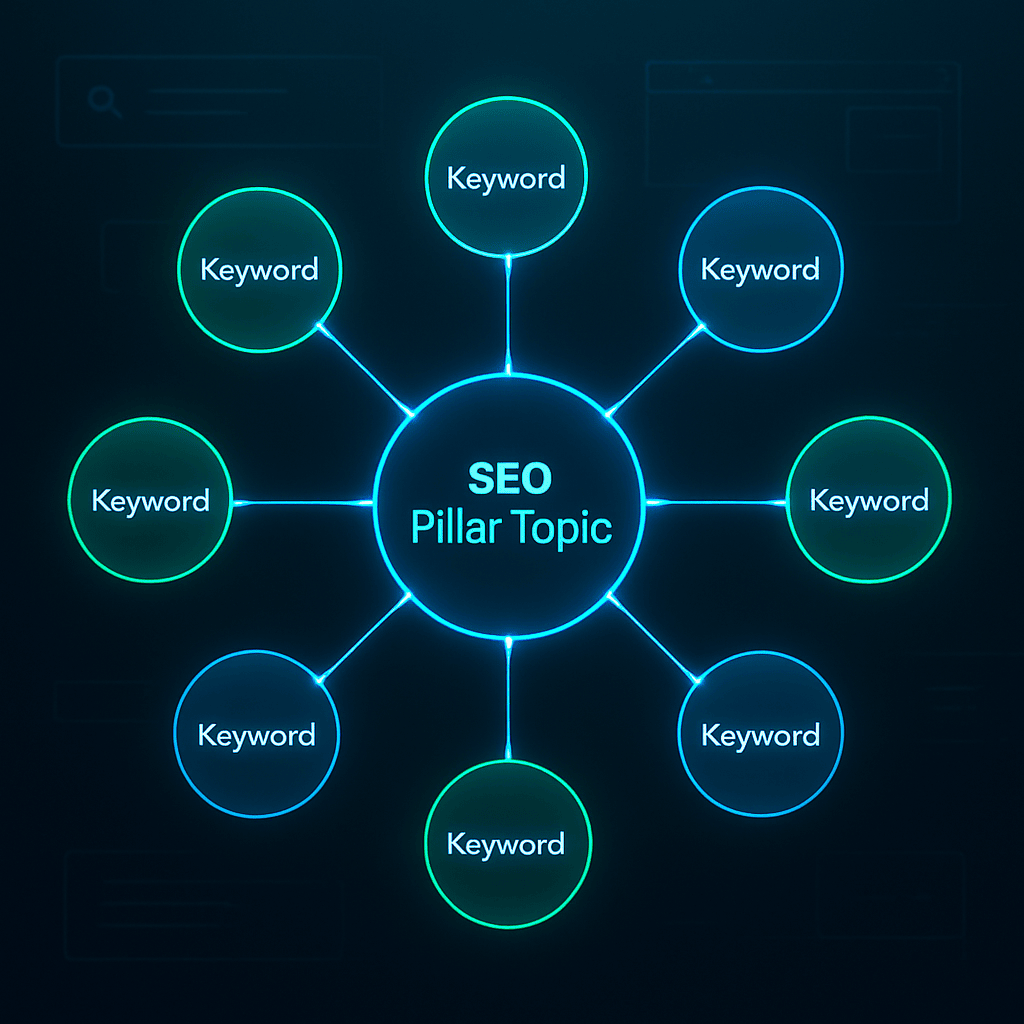The SEO world doesn’t run on keyword stuffing anymore—it runs on structure. And not just any structure—cluster-based internal linking built from intelligently grouped keyword sets. If you’re still optimizing pages in isolation, you’re doing it wrong. Modern search engines reward topical authority, contextual relevance, and most importantly, strategic linking between semantically grouped content.
Let’s break it down the right way.
What Are Keyword Clusters (And Why You Should Care)?
A keyword cluster is more than a group of similar phrases—it’s a thematic framework. Instead of targeting one keyword per page, you build a network of related terms that share search intent and feed into a larger topic.
For instance, if your main topic is “content marketing,” your cluster might include:
- “content marketing strategy”
- “how to write marketing content”
- “content calendar template”
- “SEO content marketing tips”
Each supporting keyword represents a page that strengthens the main pillar page. Done correctly, this creates a semantic map that Google loves and rewards.
Choosing the Right Pillar: Stop Thinking in Keywords
One of the biggest mistakes SEOs make? Thinking too small. Your pillar should be a concept, not a query. “On-page SEO” is a topic; “best on-page SEO tools” is a query within it.
Once you’ve chosen a strong pillar topic, build your supporting content around its subcategories, commonly asked questions, and adjacent subjects. This approach isn’t just good for SEO—it makes your content strategy scalable and consistent.
Building Keyword Sets by Intent, Not Just Similarity
Grouping keywords by how they sound is amateur hour. The smarter approach? Group by search intent. Google’s algorithms are designed to understand not just what users type, but what they mean.
For example, these are two keyword groups with different user goals:
- Informational intent: “how to do technical SEO”, “technical SEO checklist”, “technical SEO basics”
- Transactional intent: “technical SEO consultant”, “best technical SEO agency”, “hire SEO expert”
Each of these clusters should lead to a different piece of content. Never force them into the same page unless the intent aligns perfectly.
Writing Content That Serves the Cluster, Not the Other Way Around
Don’t retrofit content around keywords—that’s backwards. Once your clusters are defined, build out the content with them at the core. Here’s how:
Your pillar page should be broad, deep, and internally linked to every supporting page. Those supporting articles should, in turn, target long-tail keywords and link naturally back to the pillar.
For example, if your pillar is “Local SEO,” create subpages like:
- How Google Business Profile affects local SEO
- Optimizing citations for local visibility
- Review signals and local rankings
Each one targets a cluster keyword and reinforces the central theme.
Internal Linking: The Glue That Makes It Work
Let’s kill the myth: internal links aren’t just navigation. They’re signals of importance and relationships. Google uses them to understand how your site is structured—and what you care about.
You don’t need 50 internal links per post. What you need are smart, contextual links that tie your keyword clusters together. Supporting articles should link back to the pillar and—where relevant—sideways to sibling pages in the same cluster.
Just make sure every link feels natural. Forced linking breaks trust with both readers and bots.
Common Mistakes to Avoid (Yes, These Kill SEO)
It’s not enough to build keyword clusters. You have to do it without screwing up the structure.
- Mistake 1: Creating too many thin pages with minimal value. Clusters need substance.
- Mistake 2: Linking every page to every other page. That’s not a cluster, that’s a spaghetti plate.
- Mistake 3: Ignoring user flow. If your internal links are just for bots, your UX will suffer—and so will your rankings.
Write real content. Solve real problems. And link it all in a way that feels intuitive.
Pro Tips for Effective Keyword Clustering
Let’s drop in the second and final list:
- Use tools like Keyword Insights, Surfer, or Topic to automate semantic grouping
- Don’t just look at SERPs—study how people talk about the topic in forums, Reddit, or Quora
Keyword research is half science, half anthropology. The closer you get to actual human phrasing, the stronger your cluster becomes.
Internal Linking Isn’t Optional Anymore
The shift toward entity-based SEO and topical authority means one thing: your site structure is part of your ranking strategy. That structure starts with good keyword sets, grouped by intent, and connected through smart internal links.
You can’t fake this with plugins or keyword stuffing. You build it page by page, link by link, cluster by cluster.
If you’re serious about making that process easier, SEOSets gives you the tools to map keyword clusters, structure internal links, and scale your site without losing SEO focus. One tool, one strategy, one competitive edge.
FAQs
How many keywords should I include in a cluster?
Aim for 5–10 keywords that are semantically related and aligned in intent. Quality over quantity.
Can I use the same keyword in multiple clusters?
Only if the intent fits both clusters. If not, you’ll create cannibalization issues.
How often should keyword clusters be updated?
Revisit clusters quarterly. Search intent evolves, and so should your content strategy.
Does cluster-based linking help with featured snippets?
Yes. Clusters create topical authority, which improves your chances of ranking for snippets and answer boxes.
Can I build clusters manually without tools?
Absolutely—but it takes longer. Tools simply speed up the research and visualization process.


